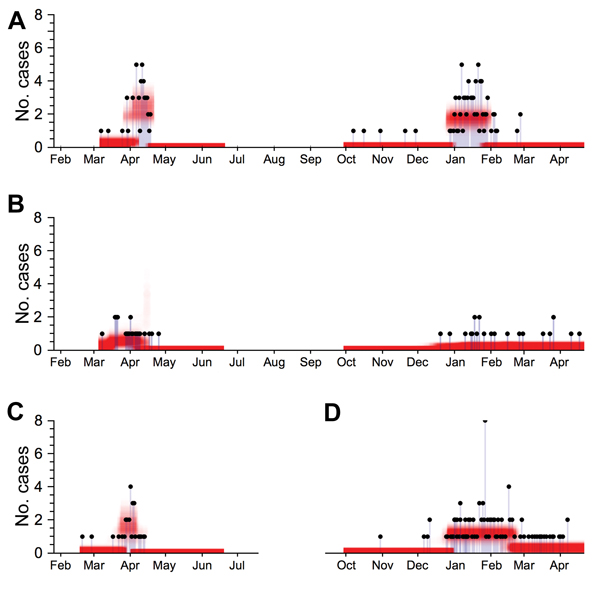Volume 21, Number 5—May 2015
Dispatch
Transmission Potential of Influenza A(H7N9) Virus, China, 2013–2014
Figure 2

Figure 2. A posteriori probability estimates of spillover hazard for influenza A(H7N9) virus infection in China, by region. Black dots show total number of reported influenza A(H7N9) virus cases for which symptom onset occurred on a given date. Red shading shows a posteriori probability estimate of spillover hazard (i.e., the expected number of cases resulting from animal-to-human transmission on each day). A serial interval of 7 days was assumed. A) Zhejiang, 2013–2014; B) Jiangsu, 2013–2014; C) Shanghai, first outbreak wave, 2013; D) Guangdong, second outbreak wave, 2013–2014.
1These authors contributed equally to this article.
Page created: April 17, 2015
Page updated: April 17, 2015
Page reviewed: April 17, 2015
The conclusions, findings, and opinions expressed by authors contributing to this journal do not necessarily reflect the official position of the U.S. Department of Health and Human Services, the Public Health Service, the Centers for Disease Control and Prevention, or the authors' affiliated institutions. Use of trade names is for identification only and does not imply endorsement by any of the groups named above.